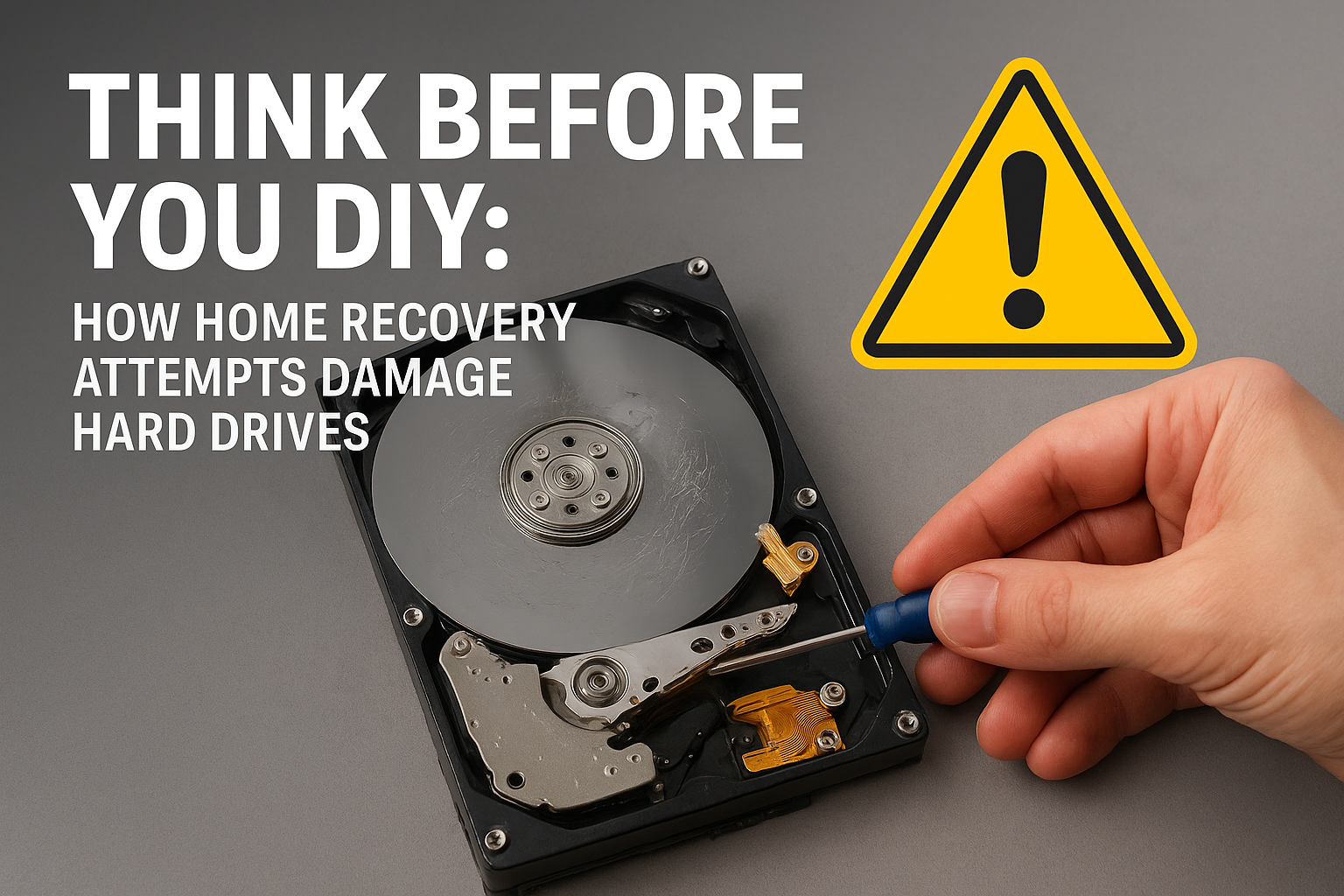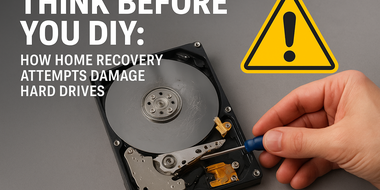Think Before You DIY: How Home Recovery Attempts Damage Hard Drives
Data recovery often feels expensive. With the rise of simple software tools and YouTube tutorials, many users try to recover data on their own. If you’re tech-friendly and have access to free or paid DIY tools, it seems like a good idea. Sadly, these attempts usually make the situation worse. Hard drives often suffer more damage, recovery becomes harder, and costs rise.
Why Users Try DIY Data Recovery First
- Cost Concerns – Professional data recovery services can look costly, so users try to avoid them.
- Plenty of Tools – Dozens of free and paid software options promise quick fixes.
- Tech Confidence – Many users feel confident enough to attempt recovery themselves.
These reasons make sense, but most users don’t realize the hidden risks.
How DIY Data Recovery Damages Hard Drives
- Repeated Power Cycles – Restarting a failing drive can cause head crashes or scratches on the platters.
- Wrong Software – Some tools overwrite existing data, making files permanently unrecoverable.
- Opening the Drive – Exposing a hard drive to open air allows dust to enter. Even tiny particles can ruin the platters in seconds.
- Firmware Errors – Advanced tools require technical knowledge. Wrong commands can corrupt the drive’s internal code.
Why DIY Raises Professional Recovery Costs
Each failed DIY attempt reduces the chance of recovery in a lab. A drive that could have been repaired easily may now need head replacement, platter swapping, or other cleanroom work. These advanced methods are complex, take more time, and cost more. In the worst cases, recovery is no longer possible.
The Real Cost of Data Recovery
- Early Professional Help – If experts handle the drive right after failure, success rates are high and costs stay low.
- After DIY Damage – Mishandled drives cost much more to recover, and results are less certain.
Data recovery may seem costly at first, but DIY attempts almost always make it more expensive later.
Signs You Should Stop DIY Immediately
- Clicking, grinding, or beeping sounds.
- The drive is not detected or disappears often.
- The system freezes whenever the drive connects.
- Recovery software produces corrupted files.
If you see these signs, stop using the drive. Call a professional data recovery service right away.
Conclusion: Professional Data Recovery Saves Time, Money, and Data
DIY recovery may look simple, but it comes with serious risks. The sooner you seek expert help, the better your chances of success. You’ll also spend less in the long run. Protect your important data—don’t risk it with risky DIY fixes.
When your hard drive fails, remember this: DIY often costs more than professional recovery.


